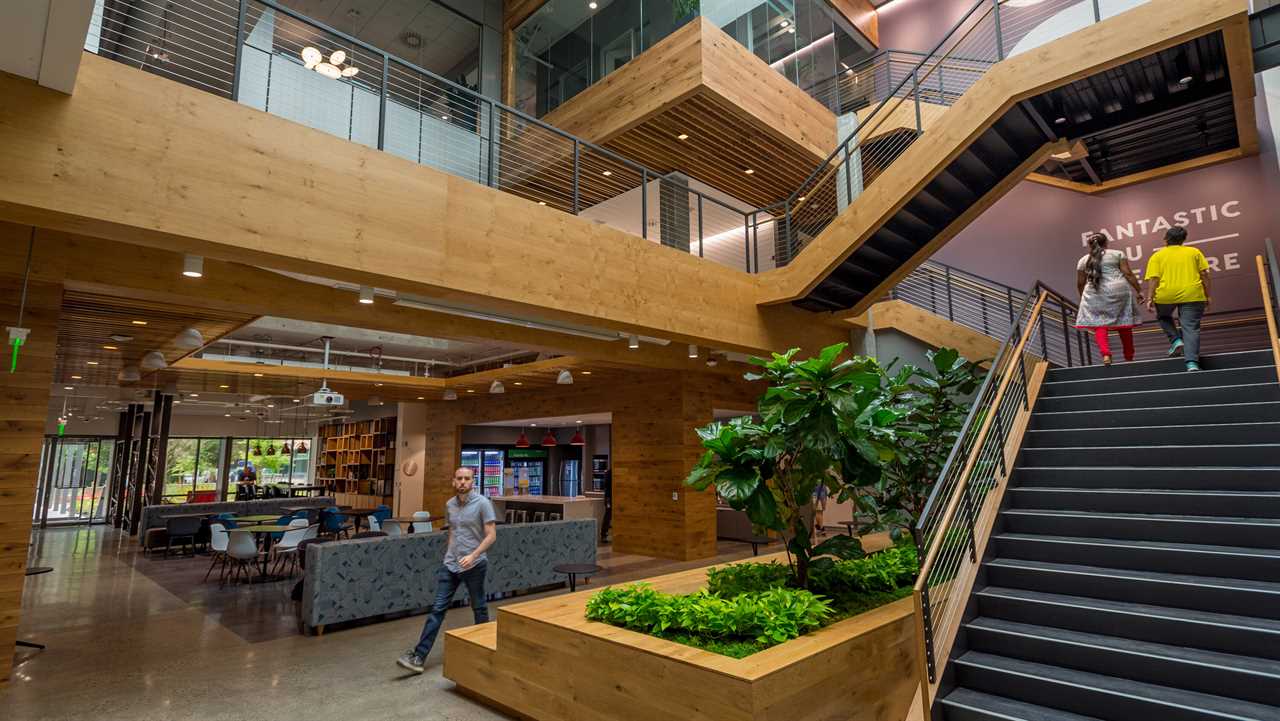
Microsoft has joined other corporate giants in assessing the best way to bring their work force back to the offices, a year after the pandemic sent home employees, who had to learn how to be productive on video conference calls while juggling interruptions from families, pets and the doorbell.
The tech giant announced Monday that it would begin allowing more workers back into its headquarters in Redmond, Wash., starting on March 29, while also acknowledging that work life may never be the same.
In this stage of reopening, which Microsoft described as Step 4 in a six-step “dial,” the Redmond campus will give some 57,000 nonessential employees the choice to work from the office, home or a combination of both. Microsoft will also continue to require employees to wear masks and maintain social distancing.
Microsoft plans to open its office without restrictions only once the virus acts “more like an endemic virus such as the seasonal flu,” Kurt DelBene, an executive vice president at the company, wrote on the company blog. But even then, office life for Microsoft’s 160,000 employees is not likely to look like what it did before the pandemic.
“Once we reach a point where Covid-19 no longer presents a significant burden on our communities, and as our sites move to the open stage of the dial, we view working from home part of the time (less than 50 percent) as standard for most roles,” Mr. DelBene wrote.
President Biden has said he is hoping for a return to normalcy by July 4 — but there are still uncertainties, like new variants, localized surges and whether the work force is ready.
How to balance these challenges with desire to return to the office has varied in large part by industry.
Some, like finance, have been more aggressive with bringing workers back to the office, premised on the belief that in-person working is best suited for the networking and training the profession demands. JPMorgan Chase is planning to bring its interns into its Manhattan office, as it did last summer, and it is continuing to build its palatial new headquarters on Park Avenue.
Others have been more open to more substantial changes. Google has said it is testing a “flexible workweek.” Target is cutting about a third of its space in its Twin Cities headquarters as it plans for remote work to be a permanent part of office life.
The retailer R.E.I. sold its new headquarters in Bellevue Wash. during the pandemic, before it even had a chance to move in. “We decided to do that because that kind of gave us a clean slate, so we could just look at all the opportunities ahead of us,” Christine Putur, executive vice president of the company’s technology and operations, said in an interview.
R.E.I. is in the process of identifying a handful of satellite locations around the Puget Sound area, which it hopes will serve as hubs for its employees to congregate. Ms. Putur said R.E.I. saw benefits in working remotely that the company wants to retain.
“We saw teams coming together in a different way — really focused on the outcomes,” she said. “And they weren’t worried about finding a conference room, they weren’t worried about who could be where at different point in time. They were focused on what problem do we need to solve, who needed to be there. And they would just gather virtually, and made incredible progress.”
The country’s largest private employer, Walmart, is proceeding with plans to expand its new headquarters in Northwest Arkansas, though expects to make virtual work permanent for its global technology team. It told U.S. employees in a memo this month that the company was continuing to work toward “a plan to bring more campus associates into offices in the future,” according to a copy of the memo, which was obtained by The New York Times.
“For most Walmart associates, the physical workplace will continue to drive culture, speed and innovation, and our associates have told us they’re looking forward to in-person collaboration through surveys and other feedback,” said Jami Lamontagne, a Walmart spokeswoman. She added that associates’ feedback would “help design our work space of the future and how we use it in the future.”
As for Microsoft, it sought to put numbers behind its decision, with the results of a survey of more than 30,000 full-time and self-employed workers. Nearly three-quarters said they wanted flexible remote work options to continue, and 46 percent said they were planning to move this year now that they could work remotely. Self-assessed productivity remained high, but 54 percent of respondents feel overworked.
“There are some companies that think, ‘We’re just going to go back to how it was,’” said Jared Spataro, the corporate vice president for Microsoft 365. “However, the data does seem to indicate that they don’t understand what has happened over the last 12 months.”






